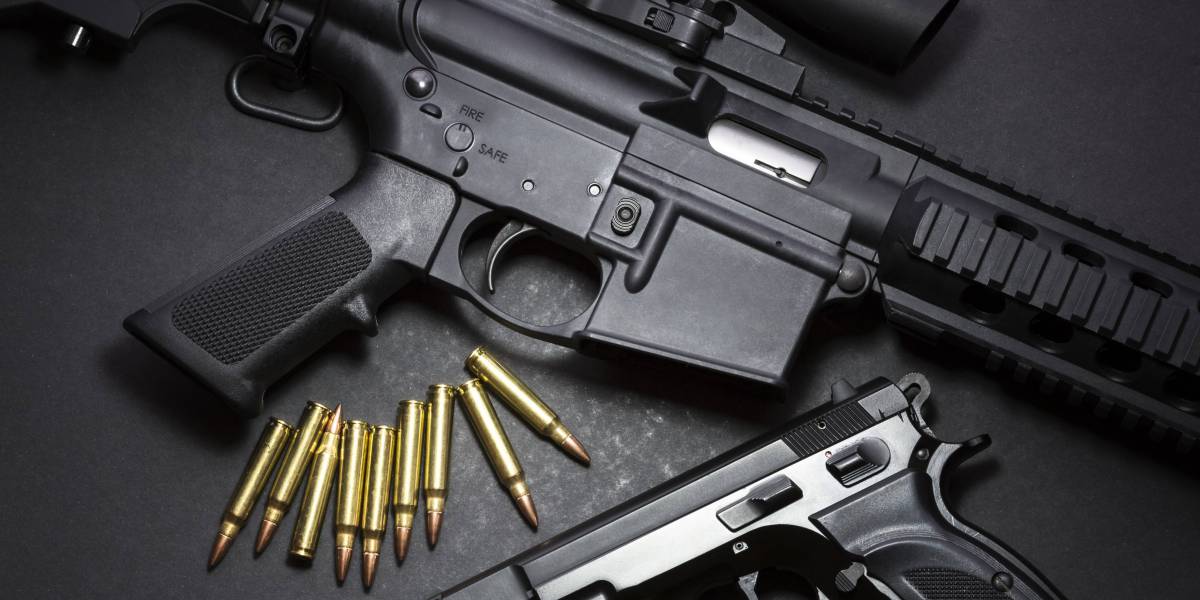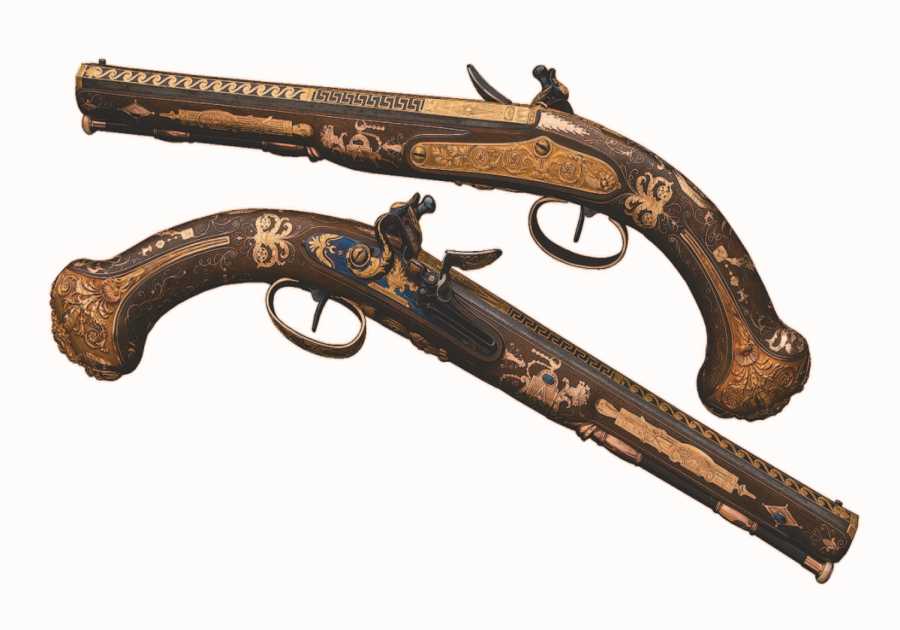
The American retail marketplace for firearms is a tale of two guns: There’s the handgun, and there’s the modern sporting rifle. Both sell by the millions each year, but the modern sporting rifle—a category whose best-known product is the AR-15—commands far more attention from manufacturers, retailers and buyers as well as gun-control activists.
For the industry, this lopsided dynamic has less to do with how these guns are misused—handguns are more often used in crimes—and more to do with pricing power and profit margins. For every 100 newly manufactured guns sold in America, according to industry estimates, as many as 35 are modern sporting rifles that are variants of the AR-15. But that portion of the market accounts for a disproportionate amount of gun-industry profits.
“Most companies say long guns are more profitable than handguns,” said Rommel T. Dionisio, a firearms analyst and the managing director of equity research at Aegis Capital Corp. “They’re very profitable products for the firearms manufacturers.”
The business disparity between handguns and long guns cannot be attributed to sales. Industry observers believe that annual unit sales are split roughly evenly between handguns and long guns, a category that also includes shotguns and hunting rifles. There’s no precise tally because the US government doesn’t track all purchases. In 2017, 42 percent of federal background checks (which don’t cover all transactions) were performed in the purchase of a long gun. Dionisio said that the AR-15 and other modern sporting rifles account for most sales of long guns.
The reason manufacturers can mine bigger profits from military-style rifles such as the AR-15 is a matter of manufacturing and customization. Classic revolvers are forged from costly steel, stamping down margins. Modern handguns made of a polymer plastic are cheaper to produce, but prices taper off at a lower level compared to modern sporting rifles. An AR-15 and its similarly designed counterparts, while also made of polymer plastic, fetch premium prices.
The double-barreled version made by Silver Shadow Advanced Security Systems Ltd., an Israeli company, has a sticker price of $2,299. The Daniel Defense DDM4V11, rated by one industry publication as the best AR-15 of the year, retails for $1,519. Best of all, for manufacturers and retailers, is that these firearms are endlessly customizable through a wide range of accessories, which can also yield high margins.
No one company dominates the modern sporting rifle. Publicly traded gunmakers such as American Outdoor Brands Corp. and Sturm, Ruger & Co. turn out tens of thousands each month. These weapons compete with offerings from boutique manufacturers and private companies such as Windham Weaponry, founded by the creator of the Bushmaster. American Outdoor, which will report earnings on Wednesday, shipped 81,000 long guns in the three-month period that ended on January 31.
It wasn’t always a big seller. The AR-15 was first developed in the late 1950s by Armalite, which was eventually acquired by Colt Industries Inc. The US military used a fully automatic version, the M-16, and eventually law enforcement adopted the weapon as well. A semi-automatic version was pitched to civilians: “If you’re a hunter, camper or collector, you’ll want the AR-15 Sporter,” reads a 1964 ad from Colt.
For almost three decades, sales remained modest. In 1990, before the Federal Assault Weapons Ban, 74,000 modern sporting rifles were produced or imported for sale in the US, according to data from the National Shooting Sporting Foundation.
The modern sporting rifle hasn’t changed much over the decades to captivate gun buyers. “Today’s iterations of the platform would be easily recognizable to a person from the mid-1960s,” said Mike Bazinet, a spokesman for the NSSF. But interest in the weapon has evolved dramatically.
A federal law in 1994 blocked the manufacturing of most assault weapons for 10 years but didn’t stem growing interest in military-style rifles, said Adam Winkler, author of “Gunfight” and professor at the University of California, Los Angeles School of Law . “The assault weapons ban itself didn’t prevent the rise of AR-15 culture,” he said. “It was already gaining a lot of steam.”
The military and police legacy helped with civilian sales. “One of the key reasons why the AR-15 platform is so popular now is that there have been decades of former ex-military and law enforcement personnel who knew how to use it,” said Dionisio.
In 2006, two years after the ban expired, the number of modern sporting rifles sold in the US jumped to 398,000. By 2016, the last year for which NSSF data is available, more than 2.3 million new weapons in the style of the AR-15 were introduced into the civilian marketplace. “This has become America’s rifle,” said Bazinet.
“Once the expiration lapsed, the market absolutely exploded,” Dionisio said. “It went from virtually zero to 70 percent” of the market for modern sporting rifles.
“You can add these attachments, trick them out, customize them.”
The popularity of the AR-15 style has been a coup for gunmakers. Not only are these firearms relatively easy to manufacture and higher-priced, they have the virtue of what Dionisio calls the “Mr. Potato Head effect,” allowing for endless consumer customization with grips, optics, sights and more—all for an additional price.
The website for national outdoor-gear retailer Cabela’s Inc. features a section devoted to AR-15 parts and accessories, listing more than 190 items. Prices range from $4.99 for a wedge that prevents rattling to $699.99 for an upper receiver, which houses the firing mechanism.
“You can add these attachments, trick them out, customize them,” Dionisio said. “Those are very high margin.”
The AR-15 and its rivals mirror the individual choice that Americans consumers have come to expect in technology products. And permitting a deeper degree of consumer choice has become an increasingly important tool for manufacturers, who have become more focused on sales to “super-owners,” the 3 percent of American adults who own an average of 17 firearms each.
“I think these particular weapons are going largely to people who already own guns,” Winkler said. “These are really guns for people who really want to go to the range and shoot and want to have a variety of options. I think this market is largely among people who have multiple firearms.”
The idea of super-owners emerged from a survey conducted by Harvard and Northeastern universities in 2015. Researchers determined that roughly 133 million guns—or half of all guns estimated to exist in the US—are owned by just 3 percent of Americans. This figure is a loose extrapolation, because the exact number of firearms in the nation is unknown. Other estimates for the total number of American guns range from 270 million to 310 million, according to the Pew Research Center.
Repeat customers have become crucial to the US firearms industry in recent years. Gun sales, as well as the shares of firearms manufacturers, soared under President Barack Obama in an atmosphere widely characterized as fear-based buying. With Republicans in control of the White House and Congress, there’s been less concern of legislation that might curb gun sales—and sales have been sluggish, dragging down share prices. Gun enthusiasts seemed to have little motivation to buy their 18th firearm.
“This market is largely among people who have multiple firearms.”
That changed after a February mass shooting at a high school in Parkland, Florida. President Donald Trump called for a ban on bump stocks and discussed some gun control measures; nationwide protests seeking additional gun control followed.
Long gun sales rose two months in a row following the Florida shooting, with sales in March soaring more than 17 percent, according to data collected by the Federal Bureau of Investigation. Analysts declared fear-based buying back—and long guns, more than any others, reaped the rewards.
Although sales went up, so did scrutiny of gunmakers. BlackRock Inc., the world’s largest asset manager, pushed American Outdoor Brands to consider the risks of producing military-style rifles. The shooter used an AR-15 variant made by the company.
The gunmaker stood its ground, telling BlackRock that the risk of taking political positions its customers don’t agree with outweighed the mega-investor’s concerns about gun safety. Part of the consideration, of course, was the bottom line: Even though American Outdoor is well known for handguns, about 21 percent of the firearms it shipped from May 2017 to January 2018 were long guns, according to a company filing. Dionisio said the company’s long gun business is dominated by modern sporting rifles. (American Outdoor did not reply to requests for comment.)
The pending ban on bump stocks, an accessory for semi-automatic weapons that was used in the Las Vegas mass shooting in October 2017, prompted far less pushback from manufacturers and their lobbyists. That also points to how much more significant the modern sporting rifle is to the gun business.
“The truth is this is a popular product line for the gun manufacturer, unlike bump stocks,” said Winkler. “Gunmakers don’t have much interest in protecting bump stocks. They have a lot of interest in protecting an important product line, like the AR-15 and its copies.”






